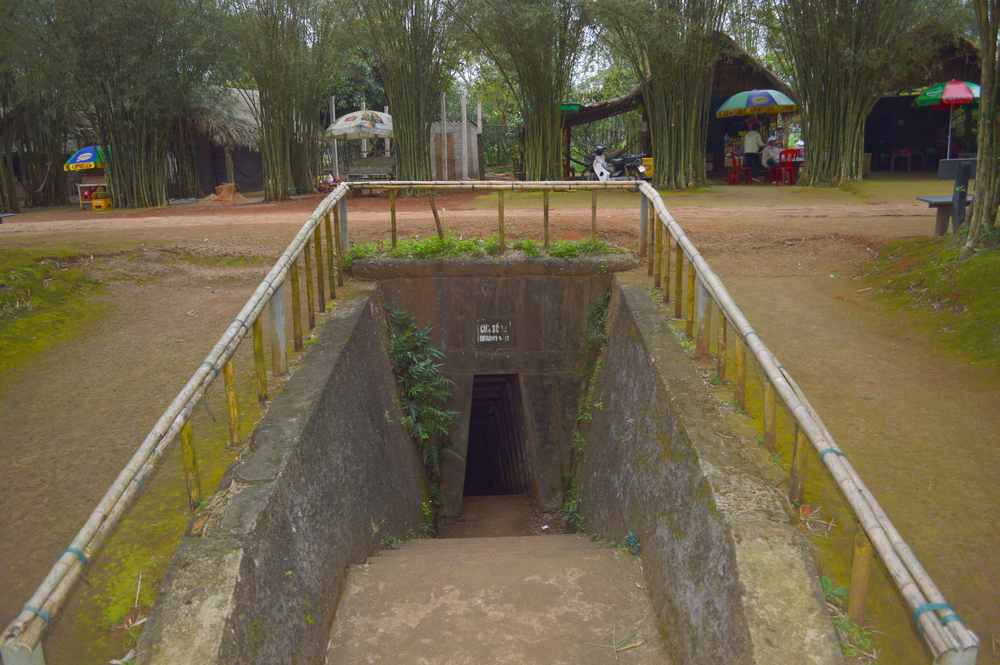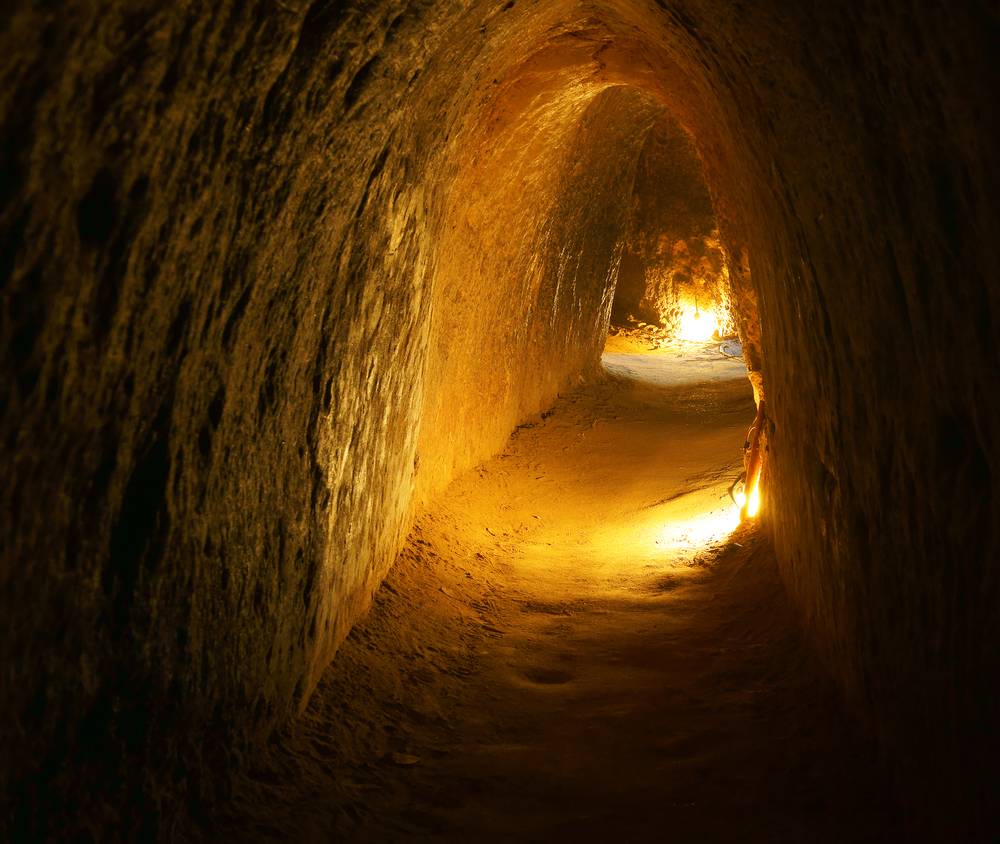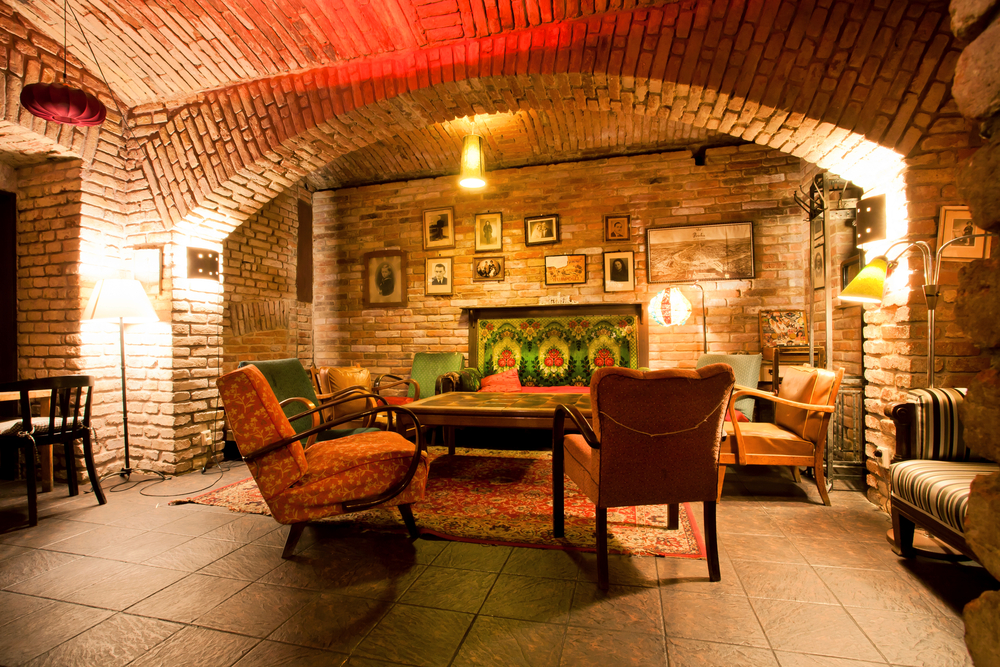“The year is 1994. We are all living underground.” So begins a 1960s movie my friends and I howled about in the year 1996, watching a large cast of extras in metallic bell-bottoms surging purposefully through tunnels. I am re-posting this post from seven years ago because I can’t remember writing it. I absorbed not one of the facts therein, and I’m surprised I never mentioned that B-film, which provided months of hilarity in my teens.
At Lisgar Collegiate, my old public high school in Ottawa, whenever I had gym class, band or strings, law or – as I vaguely recall – accounting class, I had two choices. I could either pack my books away, pin my sleeves over my hands and charge out the door, through 15 seconds of -20C blizzard to the adjacent South Building or I could take the civilized — if slightly less refreshing — route underground. Subterranean building is a common solution in extreme climates, and the future of weather means that cities elsewhere would do well to put a bit of ground between themselves and the elements. Urbanist Jane Jacobs may urge us to build up, not out, but there is another option: down.
The cobblestones of sleepy Corsham, Wiltshire, hide a well-kept secret of improbable scale. Embedded in the limestone cave network underlying the town, a 35 acre city was built to allow 4,000 government staff to ride out a nuclear war. Burlington Nuclear Bunker had its own TV studio where survivors could make announcements from the apocalypse. Offices, a hospital, a sprawling phone exchange, pub and landromats — all sat empty for half a century under a bizarre selection of Olga Lehmann murals. Powered by a heavy-duty generator, the underground city was to use a subterranean lake as a drinking water reservoir. Its existence remained classified until it was decommissioned and put up for sale in 2004.
It’s not the first time bedrock has been used as a safe haven. In fact, going underground seems to be a deeply seated psychological response to fear. When civilizations are threatened by persecution, war or — increasingly — extreme climate, they start digging.
Turkey is home to hundreds of ancient underground cities used as refugee settlements. Ozkonak, for example, was uncovered by a farmer investigating the disappearance of his crop water. With space for 60,000 people and their livestock, plus wine and oil presses, the city delved 40 meters under the slopes of Mount Idis. When the large stone doors were closed from the inside, a ventilation shaft kept air flowing and doubled as a water well. A communication system of pipes led to each of the 10 levels, which could be individually closed off and their tunnels showered with boiling oil if their persecutors penetrated part of the city. An extensive network of these cities has been uncovered, and their dates of origin are disputed, partly because they’ve been occupied and expanded in several historical periods, including the Median, Byzantine and Persian empires.
All very well for temporary sanctuary, but the prospect of an entire life lived without skies seems gloomy, oppressive — even prison-like. There’s a blended feeling of safety and claustrophobia about a life encapsulated in rock. With the right lighting and ventilation, however, underground spaces lose their cave-like oppressiveness and become eminently livable. Ever since ancient Egyptians invented the tubular skylight, cities have been trying to create natural lighting effects under a densely-built environment. Nowadays this can be achieved by using a parabolic collector to track the sun and concentrate its light, then distribute it in sun pipes. The hollow tubes are coated with reflective lining or use optical fibers. They transport light to where it’s needed or else distribute it along the length of the pipe, bending here and there without much light loss.
Airflow of .25 meters per second is a minimum. At greater depths the heat of the Earth’s magma asserts its presence, requiring cooling systems, but the temperature gradient also varies depending on the conductivity of that stretch of crust. Extra ventilation will sweep away dangerous accumulations of radioactive radon where nearby rock contains uranium.

It isn’t cheap, either. For urban-scale developments, extensive soil, seismic and groundwater surveys must be completed and careful engineering completed to prevent collapse. Boris Johnson’s announced Inner Orbital Tunnel — 22 miles of motorway under London — is budgeted at 30 billion pounds at the outset, and Singapore’s Underground Science City’s Masterplan pegs the project in the neighbourhood of $4000 per square meter. Where the water table is high, pumping systems may be required to keep the place from flooding with corrosive saltwater.
Sometimes the foe to escape is merely the nuisance of a building permit refusal. In London, far from ghettoized living, the mega-basement has been a badge of prestige. As soon as house prices started to outstrip building costs, Chelsea homes started expanding below the entire footprint of their house and gardens, evading censure by city planners, because their developments were invisible and unlikely to cause changes to neighbourhood character.
Ultimately, underground refuge might not only help our cities be resilient against environmental chaos — it could mitigate the damage, too. An entirely subterranean city, well lit and ventilated, could assign its liberated ground surface to wilderness, parkland and farming — essentially serving as one continuous green roof. Solar energy would be reserved for plant life or else collected for the city’s needs. With enough intact overburden, the visible impact of the city on the landscape could be minimal. Like the hobbit holes of the Shire, the cityscape of the future might consist of rolling hills and a pristine forest.
Images: c/o Shutterstock


“Egyptian tubular light”? Any citations regarding this. When I looked it up there were some vague references and some merely mystical ones which included references to the Government keeping us from knowledge. (Sounds like another story about a greater being keeping man from knowledge.)
I was actually just referring to their inset tubular skylights, but I’d be intrigued if it involved anything mystical…
It’d be useful if the pictures had some description indicating what they were pictures of…
Used to visit Corsham. A friend of my father’s had a pub there. I had no idea, obviously, of what lay below.
I grew up near Portsdown Hill, just north of Portsmouth, where the tunnel complex in which the D-Day invasion was planned still exists.